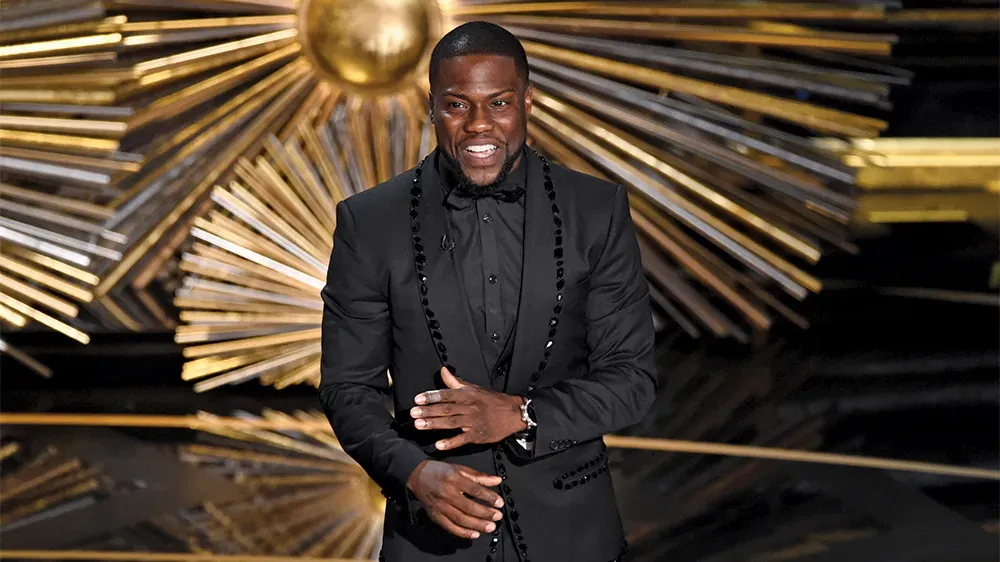
From One Hustle to a Whole Ecosystem
Most people look at Kevin Hart and see the end result: sold-out arenas, global tours, Netflix deals, brands, movies, investments, and a name that prints money anywhere it appears.
What they don’t see is the system behind it.
Kevin Hart is not just “funny and lucky.”
He is a blueprint for how a single human being can turn one talent into an entire ecosystem of opportunities, businesses, and long-term wealth—without ever stopping at “I’m just the talent.”
This article breaks down that blueprint.
We’re not here to copy his jokes or his style. We’re here to study his strategy: how he committed to one lane for over a decade, chose to be the “dummy in the room” to learn the money game, turned a deep skill into multiple income streams, protected his business with discipline instead of emotion, and built the mental strength to carry all of it.
If you’re serious about building a personal brand that outlives trends, algorithms, and platforms, the following framework—drawn from Kevin Hart’s journey—is your starting point.
This isn’t a “be famous” blueprint.
It’s a how to become impossible to ignore by playing the long game exactly like Kevin Hart did: one lane, no quitting, learn the game, own the business, protect your mind.
Think of this as 5 core pillars:
- Commit to a lane (and stay in it long enough to win)
- Be the bold beginner in every new room
- Go deep on one skill, then build an ecosystem around it
- Lead with accountability & emotion-free decisions
- Protect your mental bandwidth like your main asset
Let’s turn each pattern into something actionable for your personal brand.
Pillar 1: Commit to a Lane – The “13-Year Rule”
Kevin’s lesson: It took 13 years from his first stand-up to his “big moment”. Most people wouldn’t start if they knew it would take that long. He stayed.
Blueprint Principle
Pick a lane. Finish the sentence before you start a new one.
For your personal brand, that means:
- Choose one core identity people will know you for:
- “The crisis comms guy”
- “The fintech storyteller”
- “The Saudi tourism voice”
- “The ethical fashion designer”
- Accept that true brand equity may take 5–10+ years, not 5–10 posts.
- Don’t keep rebranding every 18 months because it’s uncomfortable or slow.
Actions:
- Audit your last 30 posts:
- Are they all supporting that lane?
- Or are you confusing people?
Complete this sentence and stick to it:
“For the next 5–10 years, I’m building my name as the go-to person for __________.”
Your reputation is what people can predict about you.
The more you commit, the easier it is for people to remember what you stand for.
Pillar 2: Be the “Dummy in the Room” – Strategic Ignorance
Kevin’s lesson: He chose to be the “dummy in the room”, asking the basic questions about investing, contracts, equity, and business. He refused to sit there pretending to understand.
Blueprint Principle
Your ego will keep your brand small. Your questions will make it big.
As your personal brand grows, the game becomes less about content and more about:
- Deals
- Rights
- Equity
- Brand partnerships
- Long-term upside
If you’re too insecure to ask questions, you’ll be the face, not the owner.
Actions:
- Make a list of “things I pretend to understand”:
- Licensing
- Revenue share
- Equity vs. fee
- Retainers vs. one-off gigs
- Turn that into a learning agenda:
- One call with a lawyer
- One call with someone in VC / finance
- One course or book on contracts / negotiations
Adopt this mindset:
“If I don’t get it, I say it. Out loud. In the room.”
That single habit is what takes a personal brand from “popular” to powerful.
Pillar 3: Build a T-Shaped Brand – From Deep Skill to Ecosystem
Kevin’s lesson: Stand-up was the deep skill. That one craft unlocked everything else: movies, tours, production company, VC, brands, global deals.
Blueprint Principle
Master one thing so deeply it becomes the engine that powers everything else.
This is your T-shaped brand:
- The vertical line (|) = your deep skill
- The horizontal line (—) = all the things that skill lets you expand into
For Kevin:
- Deep skill: Stand-up
- Horizontal line: Films, specials, tours, production, venture, products
For you, examples:
- Deep skill: Marketing strategy
- Horizontal: Courses, advisory, agency, books, SaaS
- Deep skill: Fashion design
- Horizontal: Brand collaborations, workshops, licensing, media content
- Deep skill: Tourism storytelling
- Horizontal: Shows, destination partnerships, consulting, branded experiences
Actions:
- List 5 horizontal plays that skill could power:
- A show/podcast
- A signature product
- A premium service
- A community
- A brand collab
Define your deep skill:
“If I had to put all my chips on one capability, it would be __________.”
You’re not building random side projects.
You’re building one ecosystem where everything plugs into your core talent.
Pillar 4: Own the Business – Accountability, Ownership & No-Emotion Deals
Kevin’s lesson: Real money and real control came when he stopped being just the “talent” and started owning pieces: production companies, ventures, brands. And he learned to remove emotion from deals while still staying accountable as a man, father, and leader.
Blueprint Principle
Your name is the front end; your contracts are the back end. You need both.
Two things happen as your personal brand grows:
- You become responsible for people who look up to you.
- You become attractive to people who want to profit from you.
If you don’t have accountability and business discipline, one of those will break you.
A. Accountability
- Admit when you’ve been absent, messy, unreliable.
- Decide what kind of example you want to be to:
- Your family
- Your team
- Your audience
Ask:
“If someone studied how I behave in business and in life, would I be proud of what they copy?”
B. Remove Emotion from Business
Kevin’s pattern: feelings don’t sign contracts; math does.
For your brand:
- Don’t do deals because:
- “They’re nice.”
- “They’ve known me a long time.”
- “I feel bad saying no.”
- Do deals because:
- The terms are clear.
- The upside is fair.
- The rights make sense long-term.
Actions:
- For your next big partnership:
- Have at least one neutral person (lawyer, advisor, experienced friend) review the contract.
- Ask three questions:
- “What do I own?”
- “What can they do with my name/image?”
- “What happens in 5–10 years with this content/brand/deal?”
This is how you move from being used by the system to using the system to build your own.
Pillar 5: Managing the Mental Load – Stress, Boundaries & Silence
Kevin’s lesson: He’s stressed daily, but functional inside that stress. In the early days, he put everyone first until it became unhealthy. The shift came when he set boundaries and allowed himself to disconnect.
Blueprint Principle
A burned-out personal brand is just an exhausted person with a big audience.
If your mental load collapses, your brand collapses.
Your energy is part of your brand equity.
Actions:
1. Define your “non-negotiables”
Examples:
- No calls after a certain hour
- One offline block per day
- One day per week with no public output
2. Learn to be misunderstood
Not everyone will “get” why you say no, pause projects, or disappear for a week.
That’s fine.
People don’t need to understand your boundaries for you to enforce them.
3. Build silence into your system
- Daily: 10–30 minutes with no notifications, no content, no input.
- Weekly: one planning block where you zoom out and ask:
- “What am I building?”
- “Is this still aligned with my lane?”
- “What do I need to stop doing?”
Operating at Kevin’s level isn’t about having zero stress.
It’s about building a mind strong enough to function inside pressure without losing itself.
Putting It All Together: Your Kevin Hart–Inspired Brand Plan
Use this as your one-page blueprint:
- Lane:
- Deep Skill (T-Shape Vertical):
- Ecosystem (T-Shape Horizontal – 5 Plays):
- Content / Show: ___________________
- Product / Brand: _________________
- Service / Offer: _________________
- Community / Platform: ____________
- Partnership / Collab: ____________
- Ignorance I Will Verbalize:
- Ownership & Protection:
- Who checks my contracts? __________
- Mental Load Rules:
- My boundaries: ____________________
My non-negotiable recharge habits:
What do I own in each major project?
Topics I will openly ask about (money, equity, deals, etc.):
The one skill I will master is:
I am committing the next 5–10 years to being known for:
If you follow this blueprint the way Kevin followed his path, your personal brand stops being “content online” and starts becoming what his became:
A life-sized ecosystem built on one deep skill, protected by discipline, scaled through learning, and carried by a mind strong enough to handle the weight.

